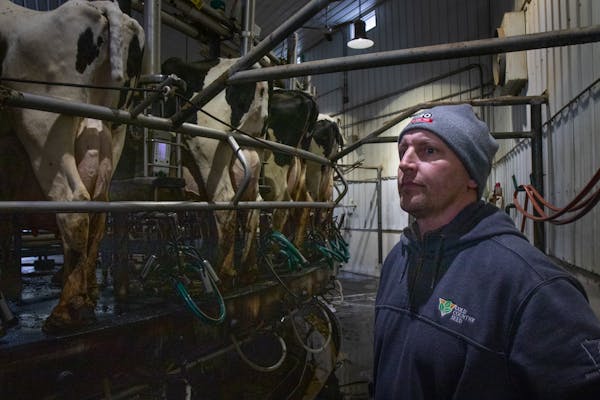Owners of the largest dairy operation in Winona County have lost a key legal battle in their yearslong fight to triple the size of their feedlot.
District Judge Douglas Bayley this week threw out a lawsuit by Daley Farm of Lewiston, Minn., that claimed Winona County commissioners had stacked a zoning board vote to ensure the farm's proposed expansion would fail.
The ruling is a major victory for several environmental groups and water quality advocates that have organized against Daley's expansion and the dairy industry's shift, as a whole, to consolidation and fewer, bigger operations.
And it's a relief for officials with Winona County, which has been sued by the Daley family several times since first denying their request to expand far beyond the county's feedlot size limits in 2019, said Paul Reuvers, a lawyer representing the county.
"This is the nail in the coffin," Reuvers said. "It was a well-written order that we fully expect to stand even if [the Daleys] decide to spend more money to appeal it."
In a statement provided by Matthew Berger, a lawyer representing Daley Farm, the family said it will appeal.
"The evidence in this case overwhelmingly demonstrates that Winona County officials actively conspired with Land Stewardship Project," a group opposed to expansion, to reject the farm's plan before it could get a fair hearing, according to the family's statement. "We hope that the higher courts will correct this grave injustice and restore the fundamental right of all citizens to a fair hearing."
The Daley family has been running the dairy in Lewiston, about 30 miles east of Rochester, for more than 160 years. It grew over the generations and now has the capacity to house 1,608 cows and 120 calves — the equivalent of 2,275 animal units as calculated by state law.
Twenty-five years ago, when Winona County set a limit on feedlots at 1,500 animal units, Daley Farm was grandfathered in and allowed to maintain its size. But the family wanted to roughly triple the operation and started applying for state and local permits in 2017 to expand to about 4,000 cows and 525 heifers, for a total of roughly 6,000 animal units.
Environmental groups and neighbors who were worried about water pollution opposed the plan, reflecting strong concern over large feedlots in southeastern Minnesota because of the area's geography.
The unusually porous rock in the area allows manure used as fertilizer to easily contaminate wells and groundwater with nitrate, which can be toxic and even deadly for infants. The region suffers from generally higher nitrate levels. The EPA estimated this month that the water supplies for more than 9,200 people in the area are likely contaminated with hazardous amounts of nitrate and demanded state agencies do more to reduce it.
A Winona County zoning board first denied the Daley family's request for a needed variance to expand in 2019. That decision was thrown out after the family appealed and a judge found that three members of the zoning board were too biased to fairly consider the proposal.
A new zoning board was appointed. It again denied the Daley family's request to expand in 2021. The board split on a 2-2 vote on the question of whether the Daleys had any reason for the expansion that wasn't financial, and the tie vote constituted a denial.
The Daleys sued once more, saying the county again failed to give them a fair hearing and that the two zoning board members who voted against them were biased from the start. One of the two had been involved with the Land Stewardship Project, the family argued.
The Daleys, however, could not "point to any actual evidence of bias," Bayley wrote in his decision. Pointing out one member's "tangential involvement" with the Land Stewardship Project falls well short of proof, the judge wrote.
Bayley added that the zoning board's decision to deny the variance was reasonable.
Sean Carroll, a spokesman for the Land Stewardship Project, said the core issue is the competing visions for what rural Minnesota should look like. One vision holds with continued consolidation of dairy farms into larger operations, he said, and the other wants to keep smaller farms viable. The Winona County animal unit cap was created to try to keep more farmers on the land, Carroll said.
"This is a clear final decision from the courts," he said. "It's time to move on. The county and the community has a lot more to be doing."

Want to share info with the Star Tribune? How to do it securely

'Safe recovery sites' would offer syringes, naloxone and more to people using drugs. The plan could be in peril.
New Minnesota GOP leaders seek peace with party's anti-establishment wing

Who is Republican Lisa Demuth, Minnesota's first House speaker of color?

